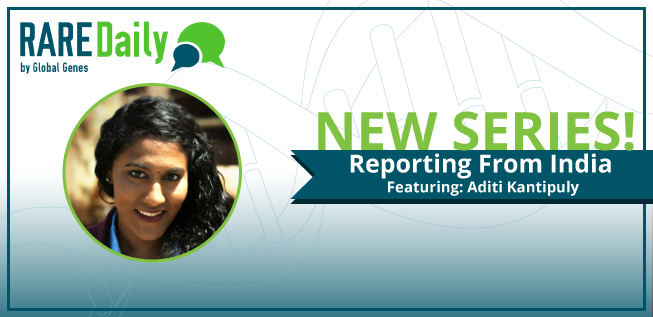Reporting From India: Bridging the Gap Between Ancient Science and Modern Medicine
December 14, 2015
(Above: Dr.Krishnakumar (left) & Dr.Lakshmi (right) at the ACCRI.)
When you stand up, you stumble. Your own body is holding you captive.While most of us have the freedom to exercise our mind and body as one entity, this is often a mere fantasy for those diagnosed with Duchenne Muscular Dystrophy (DMD). I recently had a chance to visit Molecular Diagnostics, Counselling Care & Research Center (MDCRC) for Muscular Dystrophy in Coimbatore, India, headed by Dr. B.R.Lakshmi. Duchenne is recognized as a rare muscle disorder but it is one of the most frequent genetic conditions. In southern India, recent surveillance report by MDCRC reports the incidence of DMD is twice as much as the global rate.The center stands out from most clinics in India, because of its holistic approach for its’ patients which includes: genetic counseling and multidisciplinary care. The center is also actively involved in outreach and research, in which their biobank holds close to 4000 patient blood DNA samples. I casually strike up a conversation with one of the fathers who is helping his son with physical therapy exercises. He mentions a remarkable difference in his son’s disposition and health while on Ayurvedic medicine, specifically in regards to immunity and muscle tone. When asked if his son had “conventional” medications before, he quietly nods in silence.
Ayurveda is a traditional form of Indian medicine, (synonymous to alternative medicine) dating back to the as early as 7000 BCE.After sharing the father’s observations with Dr.Lakshmi, that very afternoon I was fortunate enough to meet Padmashree Dr.P.R.Krishnakumar. (Padhmashree is a title given to individuals in India, in recognition of their distinguished contribution to a particular field).
Dr. P.R. Krishnakumar, is the director of the Arya Vaidya Chikitsalayam Clinic & Research Institute (ACCRI), which provides treatment for children at the MDCRC free of charge. He mentions that allopathic physicians often come to him in awe, when they see their patients free of disease: including cancer and infertility. I ask Dr.Krishnakumar to comment on the main difference between allopathic and ayurvedic medicine, simply put, he says “allopathic medicine seeks to eliminate disease entities, and in contrast, ayurvedic medicine seeks for holistic balance: we treat the patient as a whole, not the disease”. I walk out of the hospital astonished at the stories I hear, but also begin to question why ayurveda has not reached the “Western world”, let alone integrated itself with mainstream medicine.
Interestingly, China has made significant strides in promoting traditional Chinese medicine (TCM) in the Western world. A quick pubmed search of the term “traditional Chinese medicine” results in 37,000 matches, compared to 2,000 matches with the term “ayurvedic medicine”. This highlights the disparity in terms of research. The World Health organization (WHO) recently introduced the “traditional medicine strategy” in an effort to mainstream traditional medicine alongside allopathic medicine.
Hopefully, WHO’s new strategy will help encourage collaboration amongst countries to validate effective research practices on an international level, not only to help those suffering from common health conditions but also offering a new lease on life for those afflicted by a rare disease.

Learn more about Aditi, her mission and the Fullbright Scholarship in her first post here.

Stay Connected
Sign up for updates straight to your inbox.
